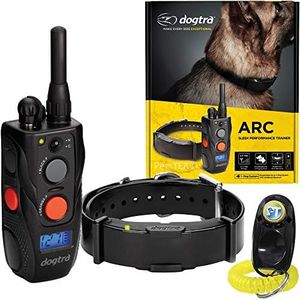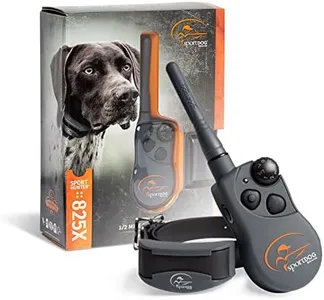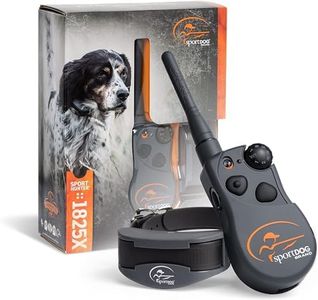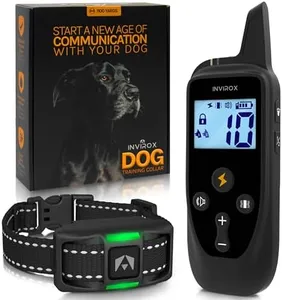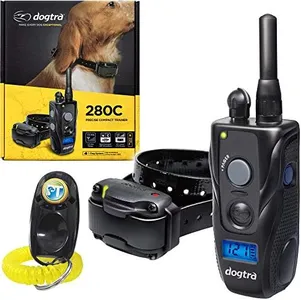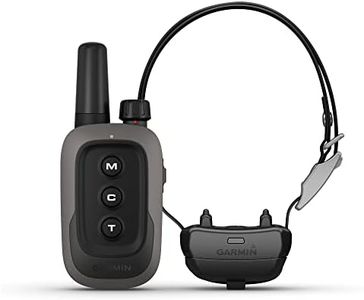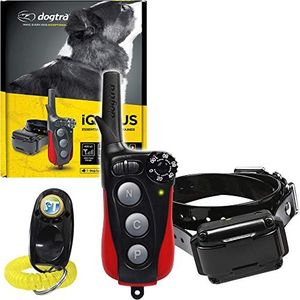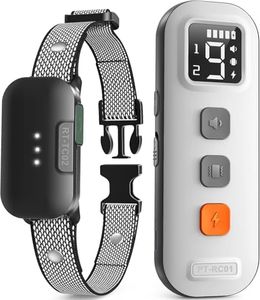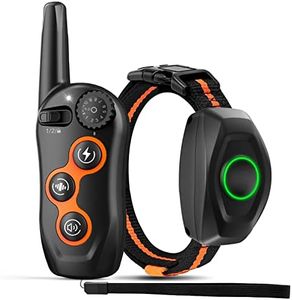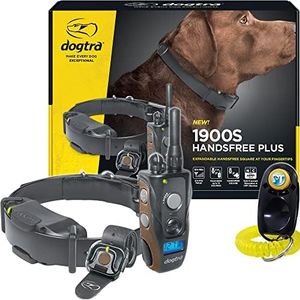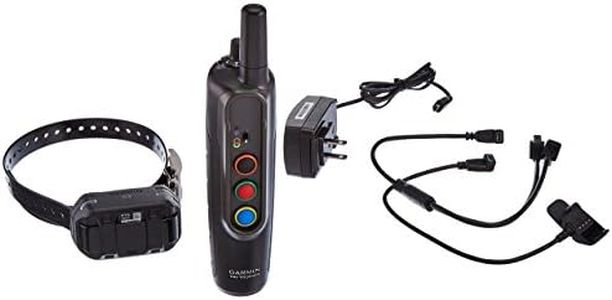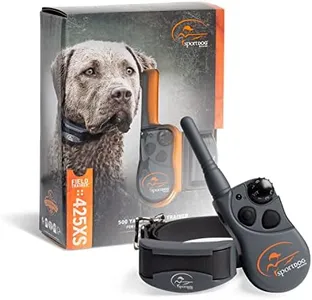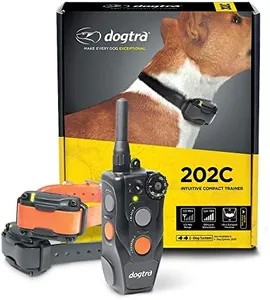We Use CookiesWe use cookies to enhance the security, performance,
functionality and for analytical and promotional activities. By continuing to browse this site you
are agreeing to our privacy policy
10 Best Dog Shock Collars
From leading brands and best sellers available on the web.Buying Guide for the Best Dog Shock Collars
Choosing a dog shock collar, also called an electronic or e-collar, is a decision that should be made carefully, keeping both effectiveness and the well-being of your pet in mind. The main purpose of these collars is to help with training, especially for correcting unwanted behavior or assisting with recall. When shopping, it is essential to look for a collar that is safe, humane, and suitable for your dog’s size, temperament, and training goals. Think about how and where you'll be using the collar (for example, at home, outdoors, or for specialized training) as this can also influence which features are important.Stimulation LevelsStimulation levels refer to the different intensity settings available on a shock collar, allowing you to adjust how strong the electronic pulse or vibration feels. This is important because dogs have different sensitivity levels—what works for a large, thick-skinned dog could be too harsh for a small or sensitive one. Collars with more levels offer finer control, going from very gentle to more noticeable corrections. If you’re new to using these collars or have a smaller or sensitive dog, look for more gradations so you can find the minimal effective level. Your goal should always be to use the lowest correction that gets your dog’s attention, not to cause pain.
Static, Vibration, and Sound ModesMost modern collars offer a combination of static (electric), vibration, and sound (beep) correction. This is valuable because not all dogs respond the same way—some may be startled enough by a beep or vibration without ever needing static correction. Choosing a collar with multiple modes gives you the flexibility to start with the gentlest methods first. If your training involves only mild course correction, a sound or vibration mode may be all you’ll ever need.
RangeRange describes the maximum distance over which the remote can communicate with the collar. This matters if you plan to train your dog off-leash outdoors versus only needing it at home for close-range corrections. Ranges typically span from a few dozen meters to several hundred or even up to 1,000 meters. For small backyards, a short range is fine. For hiking, hunting, or park use, you’ll want a longer range to maintain control when your dog is far away.
Collar Adjustability and FitAdjustability and fit mean how well the collar can be scaled to fit your dog's neck size comfortably and securely. Collars should be snug but not tight, and the contact points should touch your dog's skin without causing discomfort or injury. High adjustability is crucial for puppies or growing dogs and for multi-dog households using the same system. Always check the recommended neck size and weight range to ensure a good match for your dog.
WaterproofingWaterproofing tells you how well the collar can withstand exposure to water, whether that’s rain, puddles, or swimming. For dogs prone to getting wet—either through weather or activities—choosing a waterproof collar is essential to ensure it continues working safely. If you’ll only use the collar indoors, water resistance is less crucial.
Battery LifeBattery life is how long the collar and remote last before they need recharging or new batteries. Long battery life is important if you use the collar for extended training sessions or forget to charge frequently. Some collars have battery indicators or quick-charging features, which are helpful for avoiding downtime. If your training is short and infrequent, battery life may be less critical.
Safety FeaturesSafety features include automatic shut-off, lock modes, or warning indicators designed to prevent accidental over-correction or misuse. These are especially important for new users to protect the dog from receiving unintended or repeated shocks. Look for collars with these built-in precautions, especially if you want added peace of mind during training.
